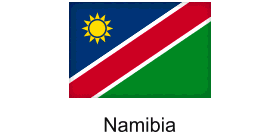 Namport Advocates For Rail Connection To Botswana-Zambia
Namport Advocates For Rail Connection To Botswana-Zambia
The absence of rail connections to Botswana or Zambia presents a significant obstacle to the competitiveness of Namibian ports. The Namibian Ports Authority (Namport) asserts that by establishing rail connectivity, Namibian ports can fortify their competitive stance in Southern Africa and enhance the efficiency of the overall logistics network.
Namport states in the 2023 Annual Reports that it is actively collaborating with key stakeholders in the government and industry to prioritise the establishment of rail connectivity to the hinterland. This collaborative effort underscores the importance of a reliable rail network in bolstering the competitive advantage of Namibian ports compared to others in the region.
“Advocating for rail infrastructure development,” Namport states, “is aimed at improving overall port efficiency, reducing transportation costs, and attracting a larger share of hinterland cargo.”
The lack of a rail connection to either Botswana or Zambia significantly hampers port effectiveness in serving landlocked countries, according to Namport. A reliable and efficient rail link to the hinterland is deemed crucial for enhancing port efficiency and cost-effectiveness.
Namport emphasises that rail infrastructure has the capacity to handle larger cargo volumes compared to road transport. The absence of rail connections further constrains port capacities to handle growing shares of hinterland cargo, leading to higher transportation costs for cargo owners and diminishing the overall competitiveness of the logistics chain.
In 2023, Namport’s cross-border volumes grew 41% to 2,263,362 tonnes (2022: 1,606,984 tonnes) representing 29% of total cargo volumes handled by the Authority. The total cross border volumes comprised 782,184 tonnes destined for the hinterland and 1,481,178 tonnes from the hinterland. Key markets such as South Africa, Zambia, the Democratic Republic of Congo (DRC), and Botswana contributed to the growth in cross border volumes. Botswana experienced a significant increase and this was driven by coal and copper concentrate exports and fuel imports, highlighting the importance of the logistics hub concept for sustained growth.
Namport notes plans for the development of the Trans-Zambezi and Trans-Kalahari railway networks are underway at the Namibian Government level, but investment decisions for both projects are pending. While the feasibility study for the Trans-Zambezi rail has been concluded, confirming its potential viability, the assessment for the Trans-Kalahari rail is still ongoing.
The Trans-Kalahari Railway, slated for construction between Namibia and Botswana, is anticipated to facilitate the transportation of 14 million tonnes annually in its inaugural year of operation, with the potential to increase to 56 million tons per annum by its 30th year of service, as revealed in project tender documents. Construction is scheduled to commence in January 2025 and is planned to primarily serve as a conduit for transporting coal and copper from Botswana.
Regarding the Port of Lobito in Angola, Namport acknowledges its significance as a regional competitor due to its strategic location and infrastructure investments. As an alternative gateway for landlocked countries such as the DRC and Zambia, Lobito port has witnessed growth in recent years and has attracted cargo traditionally routed through the Port of Walvis Bay.
Namport further highlights the 30-year concession signed at the end of 2022 for rail services and logistical support for the 1,290 km Lobito Corridor, connecting Lobito port to Luau in Angola’s east, near the DRC border. This corridor offers the shortest route for copper and cobalt from DRC and Zambia and increased capacity for the transit of liquids and gases, with significant financing lined up from the United States’ Development Finance Corporation.
The United States has also proposed expanding the Lobito corridor to the Tanzanian coast. Namport believes that Lobito’s strategic location and infrastructure improvements could potentially divert trade flows away from Walvis Bay. Changes in trade agreements or tariffs between Angola, Zambia, and DRC could further impact cargo routing decisions, favouring Lobito over Walvis Bay.
“If the United States investment extends to the Tanzanian coast,” Namport notes, “it would further erode Walvis Bay’s competitiveness for hinterland cargo.”
